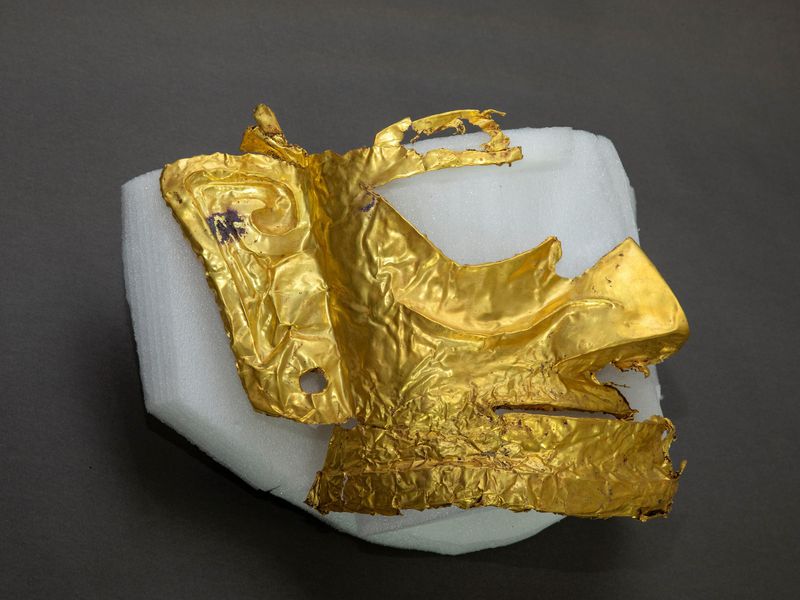3000 years old golden mask
Categories: Calendar , Nálezy nejenom s detektorem v Číně
A beautiful golden mask was discovered by archaeologists at the famous Chinese site of Sanxingdui. According to experts, it is about three thousand years old. It was located in a sacrificial pit, which was used during rituals.
The festive mask weighs about 800 grams, only a part was found. 84 percent of it is made of gold and, according to the National Heritage Administration, was part of thousands of other items discovered in six sacrifice pits. They are located at the Sanxingdui Archaeological Site near the Chinese city of Guanghan in Sichuan Province. It is a really large area of about 7.5 square kilometers.
Some experts claim that the found objects may shed more light on the history of the kingdom of Shu until it was conquered in 316 BC. In addition to the mask, archaeologists have also found gold foil and artifacts made of bronze, ivory, jade and bone.
In a total of six newly discovered pits, the largest of which has a floor plan of nineteen square meters, archaeologists have also discovered an unopened wooden box and a bronze vessel with an owl-shaped pattern.
More than 50,000 artifacts have been found in Sanxingdui since the 1920s. It all started when a local farmer came across the first historical objects. The biggest turning point came in 1986, when archaeologists excavated two sacrificial pits containing over a thousand artifacts. This includes sophisticated and well-preserved bronze masks.
Archaeologists returned to the site after a long break two years ago, when they discovered a third pit. Then five more last year. Experts believe that the pits were used for rituals, as indicated by the objects in them. In addition, they were ritually burned.
Sanxingdui is believed to have been at the heart of the Shu kingdom, of which historians know relatively little so far. They do not have enough written records. Artifacts from the Sanxingdui site date back to the 11th and 12th centuries BC. Many of these objects are already on display in the museum.
The findings revolutionized the understanding of the development of civilization in ancient China. Evidence of Shu's unique culture suggests that the kingdom developed independently of other communities living in the Yellow River Valley, which was considered the cradle of Chinese civilization.


Sources www.ccn.com, www.smithsonianmag.com
The article is included in categories: